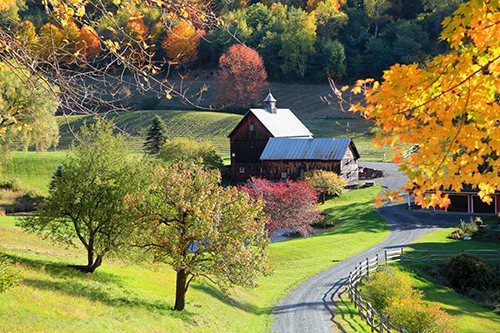Changing The Way We View Private Land Conservation
By: Emily Nason
Posted on:02/07/2018 Updated:02/08/2018Though public lands are crucial for conserving some of our nation's last wild spaces, the reality is that private lands surround and connect these spaces

The term, “private land” vs the term “public land” comes with its own set of stigmas. If you’re like me, the idea of taking money from public lands to assist private land owners made my skin crawl. I assumed the selling and funding of privately owned lands meant that the land would be used for a profit, sold to the highest bidder to drill, dig, build, and destroy. As someone who has worked in conservation for about 5 years, I always believed that land should be in the public’s hands, not private corporations. Why did I think this? Because I assumed the department of interior, the NPS, the USFS, and the BLM knew more about land management than anyone else. And while that’s not wrong, its not 100% accurate either.
While the government does its best to maintain public lands, it’s not their top priority. And because of this, there is a combined deferred maintenance estimated at $18.62 billion. This figure includes $11.3 billion (59%) in deferred maintenance for NPS, $5 billion (29%) for FS, $1.40 billion (8%) for FWS, and $0.81 billion (4%) for BLM. That’s billions of dollars that are needed to protect these public lands, and it’s just not happening fast enough. If we put our funds and energy into private land owners, farmers, and ranchers, we can guarantee the land will be cared for. Why? Because it’s their livelihood. It’s their number one priority. They will do whatever it takes to ensure that their land is healthy, successful, and well maintained. Unfortunately, the same can’t always be said for publicly funded lands.
What I never realized is how important private land is and why it needs funding. Private lands are the lifeblood of the west and are 5 times more important than private lands anywhere else in the country. For example, they control the water that flows to our metropolitan areas- the waters that sustain Los Angeles flow from private land watersheds in the rocky mountain states. They also host the vast majority of both wetlands (82%) and endangered species habitats (80%). Privately owned land contains disproportionately high levels of biodiversity and habitat for rare species. Fewer than 10% of U.S. endangered species occur exclusively on public land.
Most public lands consist of rocks, ice, alpine trees, and high-altitude deserts. Nothing can grow, and nothing can really live there. Meanwhile, the biodiversity is concentrated in our creeks and drainages and river bottoms, which is predominantly in private ownership. Private lands therein are 5 times more important than any other land in the nation for one simple reason: they control the water. Thus they are our reservoirs of biodiversity.
Of course, this doesn’t mean that public lands aren’t important. We need to protect and respect those spaces as well. But we need to change the way we think about private land ownership and private land conservation. Though public lands are crucial for conserving some of our nation's last wild spaces, the reality is that private lands surround and connect these spaces. If we can provide private landowners with the knowledge, tools and motivation to manage their land in a way that promotes biodiversity and optimizes ecosystem services, we will be leaving a healthier planet for future generations.
 Sign In
Sign In
 Sign In
Sign In
